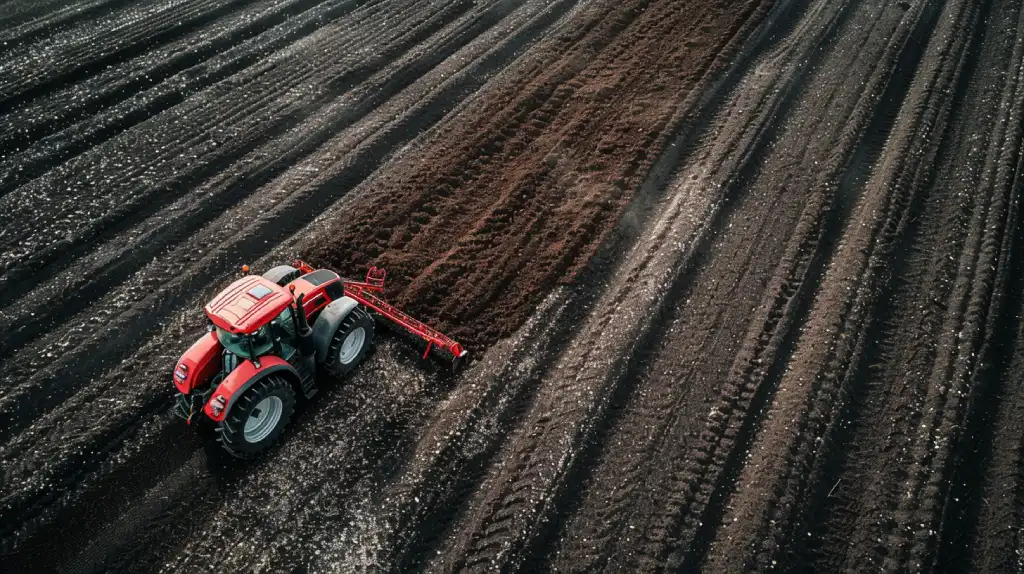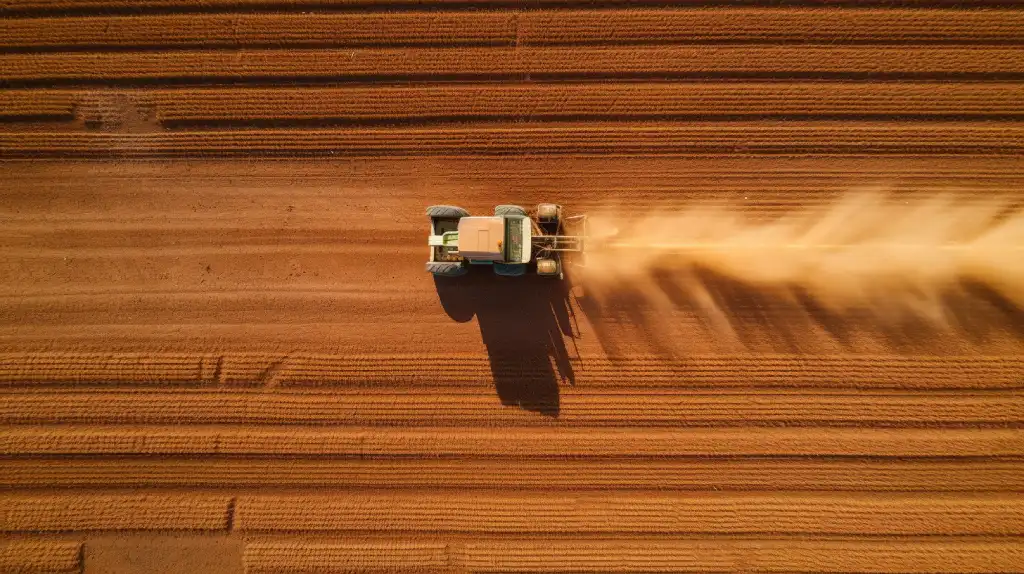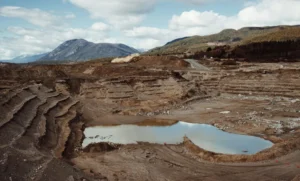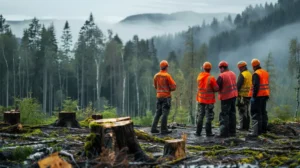Tilling disrupts soil structure, leading to erosion, nutrient loss, and reduced water retention.
Tillage is a farming method where the soil is turned over. It is harmful to the earth. For example, almost one-third of all farmland soil is gone because of tilling.
Explain how tillage has negative effects on the environment
Tillage has several harmful effects on the environment, including accelerated soil erosion, reduced carbon storage, increased greenhouse gas emissions, disruption of soil ecosystems, water quality degradation, loss of soil biodiversity, and decreased water absorption.
A shocking 40% of topsoil has been lost globally due to intensive tillage practices. Also, tilling releases stored carbon into the atmosphere, contributing to climate change.
The process can disrupt soil ecosystems, reducing precious biodiversity and damaging soil fertility.
7 Negative Effects of Tilling

Here are seven negative ways in which tillage impacts the environment.
Tillage speeds up soil erosion by breaking down the soil structure, making it easier for wind and water to carry soil away. This leads to a loss of fertile topsoil and causes residue to gather in rivers and lakes, which can harm water quality.
2. Soil Structure Degradation
When soil is tilled, its structure is damaged, reducing its ability to absorb water. This can cause water to run off rather than soaking into the ground, increasing the risk of floods. Compacted soil also makes it harder for plant roots to grow and access nutrients.
3. Loss of Soil Organic Matter
Tillage breaks down organic matter in the soil more quickly, which reduces soil fertility. Organic matter is crucial for maintaining soil health because it helps retain water and nutrients, supports beneficial microorganisms, and prevents erosion.
4. Increased Greenhouse Gas Emissions
Tillage releases carbon dioxide and nitrous oxide into the air, which are greenhouse gases that contribute to global warming. This happens because tillage disturbs the soil and speeds up the decomposition of organic matter, releasing stored carbon.
By disturbing the soil, tillage destroys habitats for many small organisms and can reduce biodiversity. This loss of wildlife and beneficial insects can upset the balance of ecosystems and harm plant health by reducing natural pest control.
Tillage can cause water pollution by increasing the runoff of nutrients and sediments into nearby water bodies. This runoff can lead to problems such as algal blooms, which harm aquatic life and degrade water quality.
7. Increased Pesticide and Fertilizer Use
Tillage can lead to an increased need for pesticides and fertilizers. Disturbed soil is more open to weed growth and pest infestations, which means more chemicals are used to manage these problems. This can have negative effects on the environment and human health.
The Bottom Line
Tilling harms the land by breaking up the soil and causing erosion, nutrient loss, and water problems.
Tillage has several harmful effects on the environment, from soil degradation to increased greenhouse gas emissions. Adopting sustainable farming practices, such as e-farming or no-till farming, can help reduce these impacts. These alternatives improve soil health, protect water quality, and support biodiversity.
Tilling is bad for the earth and we need to find better ways to farm. We can help by eating food grown without tilling and supporting farmers who care for the soil.




